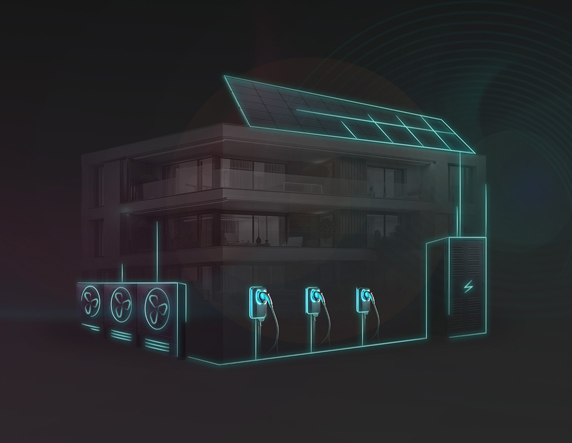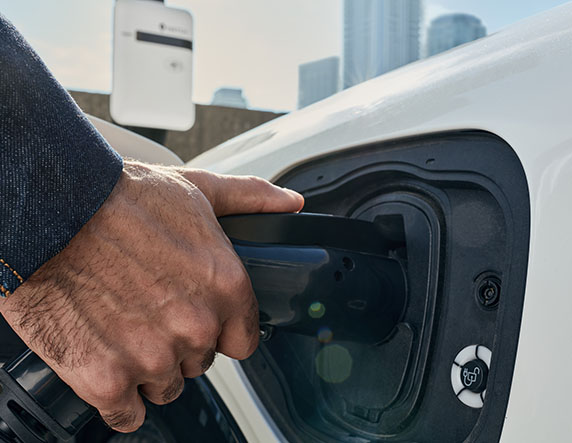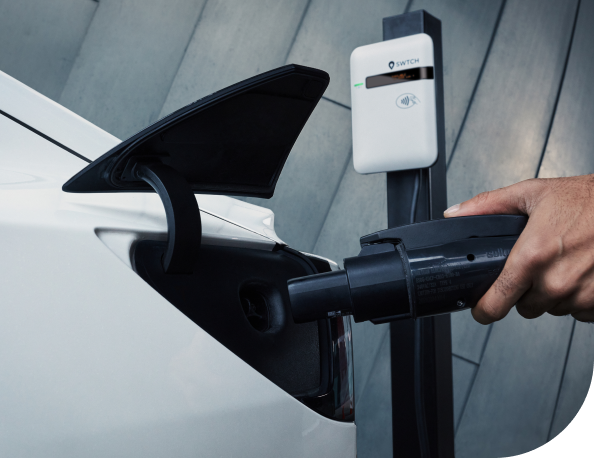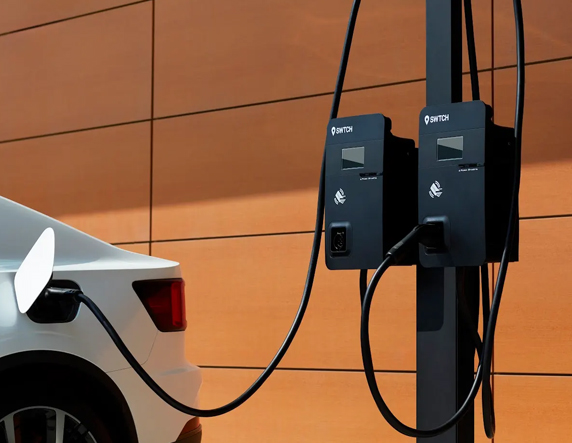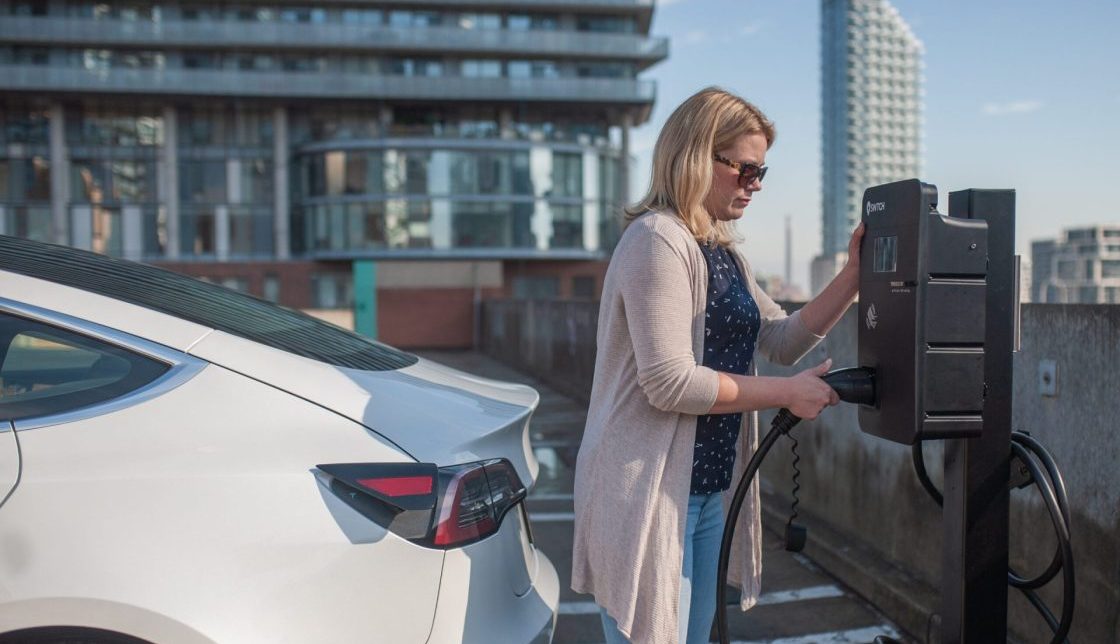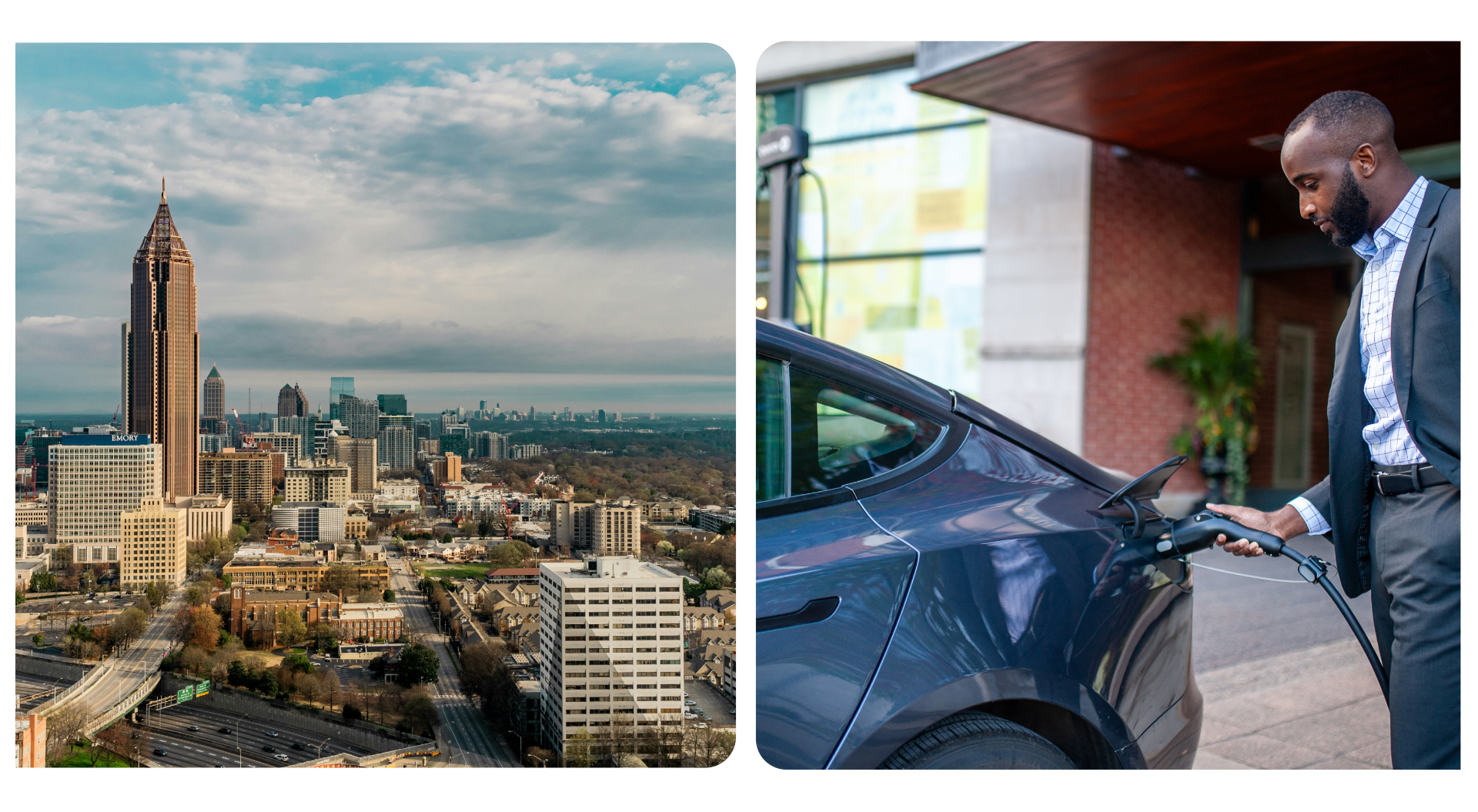Power Up Your Property: Ontario’s EV ChargeON Program Returns with Up to 75% Funding Coverage
Installing EV charging infrastructure in Ontario is about to get much more affordable. The province’s EV ChargeON program is reopening imminently with an impressive $66 million investment dedicated to expanding publicly accessible EV charging stations throughout Ontario.
Whether you manage a residential building, commercial property, retail location, or serve on a condominium board, this program offers substantial grants covering up to 75% of installation and hardware costs—making now the perfect time to electrify your property.
IMPORTANT NOTE: Applications must be in by December 15! To maximize your odds of a successful application, contact SWTCH for assistance today.
EV ChargeON 2025: Quick Facts
Funding Available: Up to 75% of project costs (maximum $150,000 per port for municipalities/Indigenous applicants; $100,000 per port for businesses)
Who Can Apply: Businesses, municipalities, non-profits, Indigenous communities, and broader public sector organizations anywhere in Ontario
Critical Requirement: Sites must be publicly accessible 24/7/365 for maximum funding rates. Limited-hours sites receive only 25% funding regardless of location or applicant type.
Timeline: The application window opens on November 3 and closes December 15, 2025. Applicants will be notified of results on April 1, 2026.
Total Program Funding: $66 million distributed based on a merit-based evaluation
Administered by: Ontario Ministry of Transportation
What is the EV ChargeON Program and How Much Funding is Available?
The Ontario EV ChargeON Program supports the installation of public electric vehicle charging stations throughout Ontario, with enhanced funding levels for locations that need the most support. Administered by the Ministry of Transportation, the program aims to reduce range anxiety, fill gaps in Ontario’s EV charging network, and support long-distance travel across the province.
Funding levels vary significantly based on three key factors:
- Your location (Northern Ontario vs. Rest of Ontario)
- Your applicant type (Indigenous communities/businesses and small municipalities receive highest rates; other businesses, non-profits, public sector, and large municipalities receive standard rates)
- Your site’s operating hours (24/7/365 vs. limited hours – this is the most critical factor)
Understanding Funding by Location and Applicant Type
For sites committed to 24/7/365 public access:
Northern Ontario (ALL applicant types):
- Up to 75% of total project costs
Rest of Ontario:
- Indigenous Communities and Indigenous Businesses: Up to 75% of total project costs
- Municipalities with populations below 170,000: Up to 75% of total project costs
- Businesses, not-for-profit corporations, broader public sector, and municipalities with populations above 170,000: Up to 50% of total project costs
CRITICAL REQUIREMENT: Sites open less than 24 hours per day, 365 days per year receive only 25% funding coverage regardless of applicant type or location. This represents a 50-67% reduction compared to sites committed to round-the-clock public access.
How Funding is Calculated
The 2025 EV ChargeON Program uses a simplified funding formula with no per-port or per-charger caps. Your funding is calculated as a percentage of your total eligible project expenditures.
Your funding amount = Applicable percentage rate × Total eligible project costs
The applicable percentage rate depends on your location, applicant type, and whether your site operates 24/7/365 (see rates above).
Maximum Funding
The individual project maximum is $1 million per site.
A single applicant may submit multiple applications for different locations. Each site is treated as a separate project.
Eligibility Requirements
Who Can Apply?
IMPORTANT: All Ontario communities are eligible regardless of population size. Population thresholds affect funding levels, not eligibility.
Eligible applicants include:
- Businesses (including Indigenous businesses that are at least 51% owned and controlled by an Indigenous person)
- Not-for-profit corporations
- Municipalities (all population sizes)
- Indigenous communities (all communities in Ontario)
- Indigenous organizations
- Broader public sector organizations (hospitals, universities, colleges, school boards)
All applicants must be incorporated or registered in Ontario.
Property Requirements
Applicants must be the property owner OR provide:
- Proof of site access: Lease agreement or completed Site Access Verification Form
- Written Band Council support: For projects on reserve lands
All installations require authorization to install and operate charging infrastructure for a minimum five-year period.
Where Can Chargers Be Installed?
All Ontario locations are eligible. Charging stations must be:
- Publicly accessible 24 hours per day, 365 days per year (for standard funding rates)
- Available to the general public without restrictions
- Located anywhere in Ontario (urban centers, small municipalities, rural areas, Northern Ontario, Indigenous communities)
EV chargers that cannot be used by the general public or have restricted hours receive only 25% funding.
How to Apply and Key Deadlines
Application Timeline
November 3, 2025: Application period opens
December 15, 2025: Application period closes at 5:00 pm EST
April 1, 2026: Applicants are notified of results
Required Documentation
Your application must include:
- Proof of property ownership or site access:
- If you own the property: Title deed, property tax assessment, or mortgage documentation
- If you don’t own the property: Lease agreement or completed Site Access Verification Form
- For reserve locations: Written evidence of Band Council support
- Proof of funds: Confirmation of your ability to finance 100% of project costs prior to reimbursement (Appendices C & D)
- Preliminary electrical feasibility assessment: If your project increases electrical load by more than 50 kW, provide completed assessment form signed by your Local Distribution Company (LDC)
CRITICAL: Applications must be submitted before beginning construction. Costs incurred before receiving a Letter of Agreement are eligible toward total project costs but cannot be claimed for reimbursement.
Applicants are strongly encouraged to contact their LDC early during the application window to allow adequate time for feasibility assessments.
What Happens After You Apply
Processing: Applications are processed based on merit-based scoring. High-scoring projects receive priority funding.
Timeline after approval:
- Receive and sign Letter of Agreement
- Complete installation within 24 months
- Submit Project Completion Report with receipts, invoices, photos, usage data, and inspection certificates
- Ministry reviews and releases approved program funds
- Submit Annual Usage Reports for 5 years following project completion
Eligible Expenditures
The program reimburses specific categories of expenditures directly related to your project.
Eligible for reimbursement:
- Capital expenses (charging equipment, site preparation, networking equipment)
- Professional services (engineering, construction, installation, testing, commissioning, training, signage)
- Rental fees or leasing costs for project equipment
- License fees and permits
Eligible toward total project costs but not reimbursable:
- Salary and benefits
- Reasonable travel costs
- Environmental assessments, permits, and authorizations
- GST, PST, and HST (net of any tax rebate)
- Overhead expenses (up to 15% of total project costs)
- In-kind support, land costs, legal costs
Not eligible:
- Ongoing operating costs (electricity consumption, maintenance, networking fees, subscription fees)
Recipients are responsible for funding any cost overruns related to their projects.
How SWTCH Can Help You Secure EV ChargeON Funding
SWTCH is a national leader in EV charging solutions for multifamily and commercial properties, with a proven track record of crafting tailored systems specific to our clients’ needs. Headquartered in Toronto, we manage thousands of chargers on our network.
We’ll Walk You Through the Entire Process
- Site assessment: Electrical feasibility coordination with your LDC
- Equipment selection: Optimal charger configuration for your site
- Application preparation: Complete documentation and strategic positioning
- Installation management: Licensed contractors, permits, inspections
- Operations planning: Maintenance, monitoring, and Annual Usage Report compliance
Don’t miss this opportunity to electrify your property and participate in Ontario’s sustainable transportation future. Contact SWTCH today to see how our platform can meet your EV charging needs and receive expert guidance on positioning your project for a successful application.
Get in touch with SWTCH to maximize your odds of success when the November 2025 application window opens.
Frequently Asked Questions
Can large cities like Toronto or Ottawa apply?
Yes. All Ontario communities are eligible regardless of population size. Businesses, non-profits, public sector organizations, and municipalities in large cities (population over 170,000) receive 50% funding for 24/7/365 sites in the Rest of Ontario, or 75% funding if located in Northern Ontario.
What if my site can only operate during business hours?
Sites with any operational restrictions (limited hours, seasonal closures, restricted access days) receive only 25% funding regardless of applicant type or location. Consider whether operational changes could enable 24/7/365 access to qualify for 50-75% funding rates.
Can I combine EV ChargeON funding with federal programs?
Yes. The program allows stacking with federal programs.
How long do I have to complete my project?
You have up to 24 months from receiving your Letter of Agreement to complete installation and operationalize your chargers. Projects require 6-month, 12-month, and 18-month progress check-ins with the Ministry.
When will funding be released?
The program operates on a reimbursement model. You must pay all costs upfront, complete the project, and submit a Project Completion Report. After Ministry review and approval, program funds are released. Ensure you have financing to cover 100% of costs before reimbursement.
